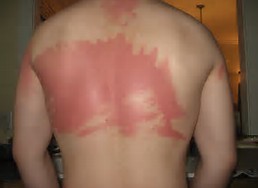Livestock Water Quality
Livestock Water Quality
Many dugouts located in saline areas may be fed from the bottom with saline ground water but will also benefit in terms of both quality and quantity from spring run-off. The water in these dugouts, has naturally high mineral levels to start with and, without fresh water recharge, and through the mineral concentration effects of evaporation, you may find that the mineral content is elevated to levels that are not suitable for use by fall. The only way to know for sure about the mineral content of these water sources is to have water tests done by a lab.
Table 1 shows levels of some parameters and effects on cattle.
Table 1. Water quality interpretation chart for livestock use (Courtesy Alberta Agriculture)
| Item Analyzed | Water content (mg/L or ppm) | Usefulness for cattle, sheep, or horses |
| Total Dissolved Solids | ||
| <1000 | Acceptable | |
| 1,001-3,000 | Acceptable | |
| 3,001-5,000* | Acceptable may cause diarrhea may reduce performance and affect health of calves at higher levels |
|
| 5,001-7,000 | Poor higher levels cause diarrhea especially in lactating cows avoid use for pregnant and/or lactating cows test for sulphates |
|
| 7,001-10,000 | Poor older animals may subsist on it for longer periods do not use for pregnant or lactating cattle or young animals sulphates likely high |
|
| >10,000 | Unsuitable | |
| Sulphates (SO4) | ||
| Measured as SO4 | <125 | Acceptable |
| Part of Epsom salts (MgSO4) | <500 | Acceptable tolerance of cattle to sulphur in water depends on the level in feed |
| Additive effect with sodium chloride They should be added together when water quality is evaluated. |
501-1,000 | Acceptable diarrhoea or refusal of water by animals not accustomed to it 500 to 800 mg/L may affect calves inducing a trace mineral deficiency trace mineral deficiencies can cause depressed growth rate, fertility and depressed immune response decreased performance in feedlot cattle 1,000 mg/L recommended maximum if feed level is high or temperature is high |
| 1,001-2,500 | Poor laxative sporadic cases of polio seen in feedlot cattle performance reduced 2,000 mg/L> can cause diarrhoea and reduced milk production in dairy cows high levels of sulphates can also contribute to copper deficiencies in beef and diary cattle |
|
| >2,500 | Unsuitable sporadic cases of polio are highly probable in feedlot cattle performance of feedlot cattle reduced performance of grazing cattle may be affected scours unsuitable for lactating dairy cows greater than 4,000 mg/L dangerous health problems expected |
|
If you encounter poor quality water, there may be options available to you:
- Switching to a source of better quality water, or using the better quality water to dilute the minerals in the poor water;
- Pumping the dugout full from somewhere else, although you need to be aware of the quality of the water at the other site;
- Trucking high quality water from another source and mixing to dilute the minerals in the poor quality water, although costly, may also work; or
- If your herd is large enough, it may be less costly (per cow per year) in the long run to look into installation of a water treatment system.
If trucking or piping water becomes a necessity, following are some guidelines for drinking water requirements for various sizes of animals. These will be useful when trying to determine the size of water storage required. Keep in mind that water requirements increase at higher temperatures.
- Cows – 67.5 L (15 gallons) for nursing cows; 54 L (12 gallons) for bred dry cows and heifers.
- Bulls – 54 L (12 gallons).
- Growing cattle – 45 L (8 gallons) for 400 lb. animal; 45 L (10) for 600 lb.; 54 L (12), for 800 lb.
- Finishing cattle – 85.5 L (19 gallons) for 400 – 1,200 lb. animal.
Keeping stock out of the water source will increase water available as well as increase quality of the water. There are a number of ways to accomplish this but no perfect system fits all situations.
Table 2 briefly describes these alternatives.
| Access Ramps | Improves access and preserves slopes on water site and will limit nutrients entering from manure and urine. Some improvement in quality is likely to occur. |
| Nose Pumps | Lower cost than some systems, but require animals to become accustomed to them. Need one for every 25 to 30 animals. May need more than are recommended by the manufacturer. |
| Gravity Flow Reservoirs | More costly and requires some excavation to build. Not suited to all sites, as water must flow downhill from water source to trough. |
| Solar Pumping Stations | Work in remote locations. Relatively expensive and requires storage batteries and water storage. |
| Windmills | Work in remote locations and require little maintenance. High variability in winds means that water storage is necessary. |
Every individual watering site may have characteristics that make it more suitable to one system or another. As a result, consultation with others is a good idea prior to developing some alternative systems. These systems will have benefits in subsequent years through better quality water and longer watering site lifespan. For assistance in water site development and equipment requirements contact your local PFRA office.
Staff in the Ministry of Agriculture Regional Offices can assist with interpretation of water test results, and provide information on management options.



